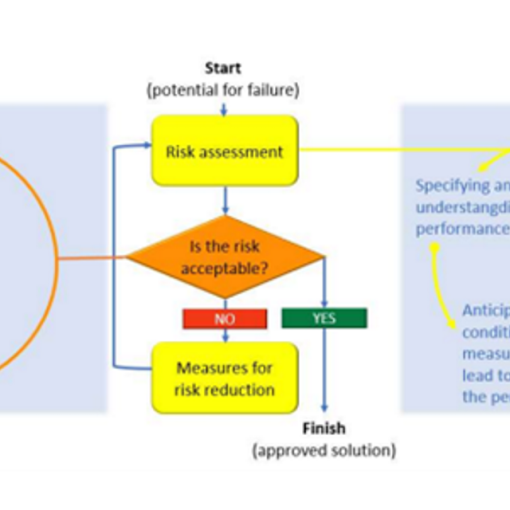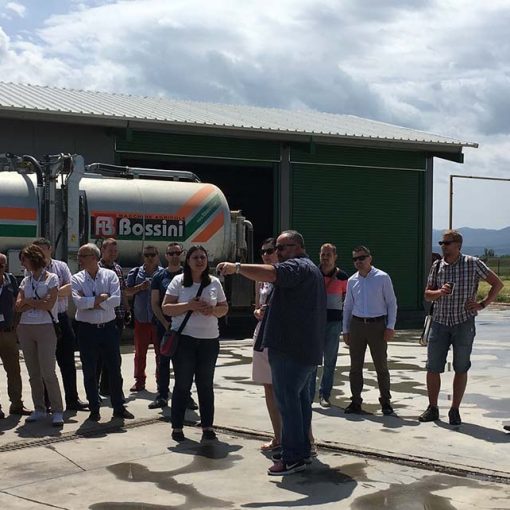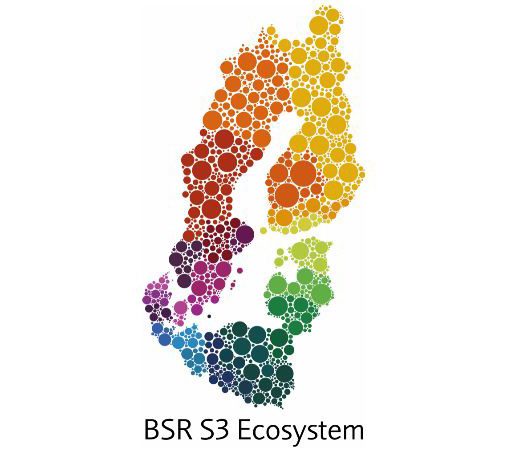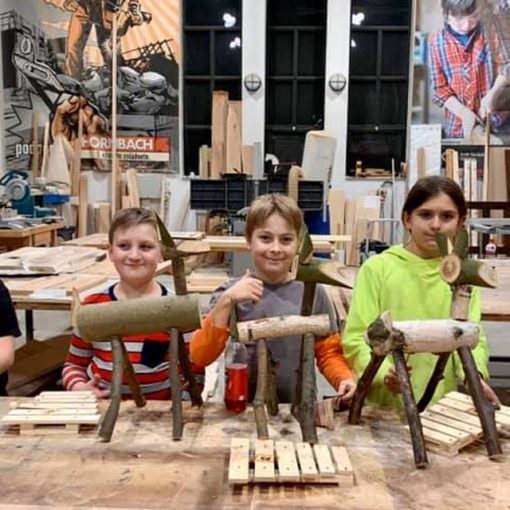Different ways of utilizing artificial intelligence for sorting and identifying textiles is being researched in the AI-mill project. A new method to improve the sorting of textile pieces based on their structure and color was developed with the help of LAB University of Applied Science’s Textile research team (in Finnish). A dataset of around 3000 pictures of different textile pieces was gathered and used to train an image classification AI model using machine learning algorithms.
With the AI model, textile pieces are classified as either weft or knit. The structure of the material affects how it can be mechanically opened into fiber and how it can be reused. In addition, the solution detects the color of the textile by counting the color pixels in the picture with a separate algorithm. Sorting by color reduces the need of recoloring the textile fibers for reuse, saving water. (LAB 2021.)
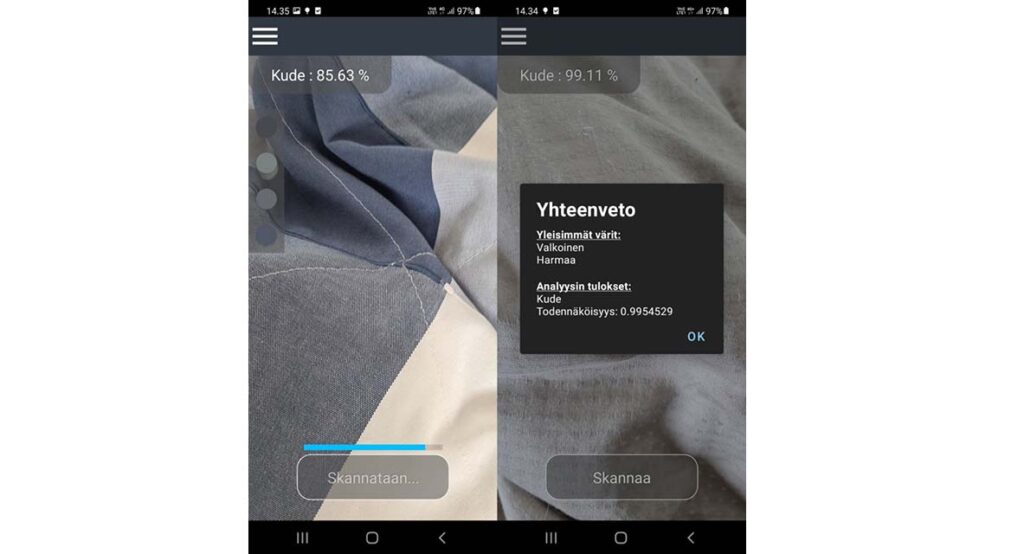
Mobile app
In June 2021, a free test version of the Textile Identifier app (in Finnish) was released in the Play Store for Android devices. The app uses the phone’s camera to classify textile pieces in real time and can also produce a more accurate analysis from the average of multiple pictures as in picture 1. The app is meant as a useful tool for textile recycling done by humans, for example in a recycling center. Sorters could use the app to scan the textile pieces being sorted and recycle them based on the results like in Video 1. The goal is to improve the recycling accuracy and make sorting easier for the workers.
Using the AI model with a sorting machine
The AI model can be tailored to work with a sorting machine. It is possible to deploy the AI model in a microcomputer with a camera attached to it and add the solution as part of the sorting machine. The microcomputer does a similar analysis as the phone app and sends the analysis to the sorting machine, which sorts the incoming textile pieces accordingly. With this information, the sorting machine gains the ability to know the structure and color of the incoming textile piece.
Developing such an application will still require further work on the software, as well as improving the AI model’s accuracy. The training dataset for the AI model still needs to be expanded greatly for it make accurate enough predictions in a production environment. Still the experiment has demonstrated that such a technique is possible to implement, and the solution is flexible in the ways it can be deployed on different devices.
What’s next?
The AI-mill project is ending in February 2022, but the development environment will continue to exist after the project ends. Further development on the textile identification technology is a possibility that the development environment hopefully gets to pursue. Before the project itself ends, there are plans of expanding the textile dataset further by taking pictures of the of textile pieces that have been gathered in LAB’s textile laboratory.
Author
Ville Teräväinen is working at LAB as a RDI Specialist in the AI-Mill and Innovative Machine Vision Solutions projects.
References
LAB. 2021. Uusi sovellus nopeuttaa tekstiilien kierrätystä. [Cited 21.10.2021] Available: https://lab.fi/fi/uutiset/uusi-sovellus-nopeuttaa-tekstiilien-kierratysta?fbclid=IwAR3KLxR7vTS1RPq8GLhmMyhKd2cYybahSFOlHt0IgmODQZy-qlro6pSyLBM
Links
Link 1. LAB. 2021. Tekoälypaja. [Cited 21.10.2021] Available: https://lab.fi/en/project/tekoalypaja
Link 2. LAB 2021. Tekstiilien ja muovien materiaalikierrot -tutkimustiimi. [Cited 25.10.2021] Available: https://lab.fi/en/node/10311
Link 3. Google Play 2021. Textile Identifier [Cited 25.10.2021] Available: https://play.google.com/store/apps/details?id=fi.lab.vision_tool
Link 2. LAB 2021. Tekstiilien ja muovien materiaalikierrot -tutkimustiimi. [Cited 25.10.2021] Available: https://lab.fi/en/node/10311
Pictures
Picture 1. Ville Teräväinen 2021. New sensor and AI-solutions are being developed in the AI-mill development environment [Cited 10 Nov 2021]
Picture 2. Ville Teräväinen 2021. Screen capture from the Textile Identifier-app while it’s scanning the textile and after it has finished scanning [Cited 10 Nov 2021]
Video
Teräväinen, V. 2021. Tekstiilintunnistin. LAB Focus. [Cited 25.10.2021] Available: https://www.youtube.com/watch?v=UvXV79Qwl_w

